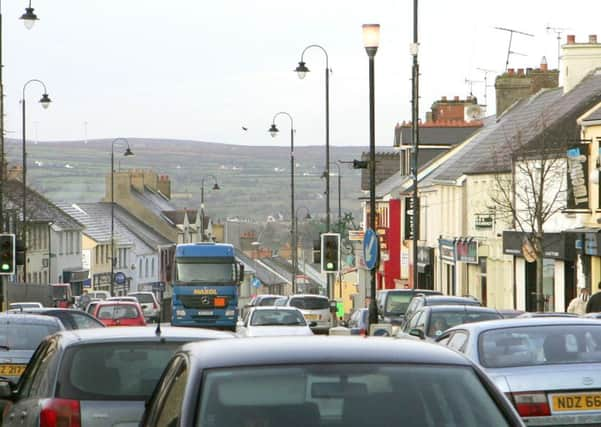Choking for fifty years


That’s the best case scenario, according to the Roads Minister Michelle McIlveen, who confirmed on Monday that her best hope for a start date was 2019.
“The indicative allocations for the 2017/18 to 2020/21 period will allow my Department to construct elements of the A6 Londonderry to Dungiven scheme, which will include a bypass of Dungiven,” she said.
Advertisement
Hide AdAdvertisement
Hide Ad“Subject to making statutory orders, approval of the final business case and successful procurement, it is possible that the first phase of the Londonderry to Dungiven scheme could commence in the latter part of 2018/19,” she added.


But that’s all contingent on a number of variables: by then, a new Assembly mandate will have been voted in with the likelihood of a new Minister and the certainty of a new Department of Infrastructure, that will have a lot more on its plate than the DRD currently does.
Meanwhile, the problem of air pollution caused by elevated levels of harmful Nitrogen Dioxide in Dungiven, will persist.
Ms McIlveen knows only a bypass will fix this.
“In its March 2008 Air Quality Action Plan, Limavady Borough Council examined a range of measures which could, in theory, be deployed to impact positively upon air quality within Dungiven whilst, at the same time, ensuring road safety was not compromised,” she acknowledged in a response to East Londonderry MLA Claire Sugden.
Advertisement
Hide AdAdvertisement
Hide Ad

“Such measures included traffic calming, traffic light control at junctions, a one way traffic system around the village, the introduction of low emission zones, priority for high occupancy vehicles and the construction of a bypass.
“Having considered each of these measures, my officials agreed with Limavady Borough Council that the construction of a bypass was the only practical method to reduce traffic levels in the village and thus, achievement of the Local Air Quality Management objectives, as set out in the Air Quality Regulations,” she stated.
Commuters and residents, who have been waiting for the infrastructure for fifty years, can expect to wait at least another three for progress.